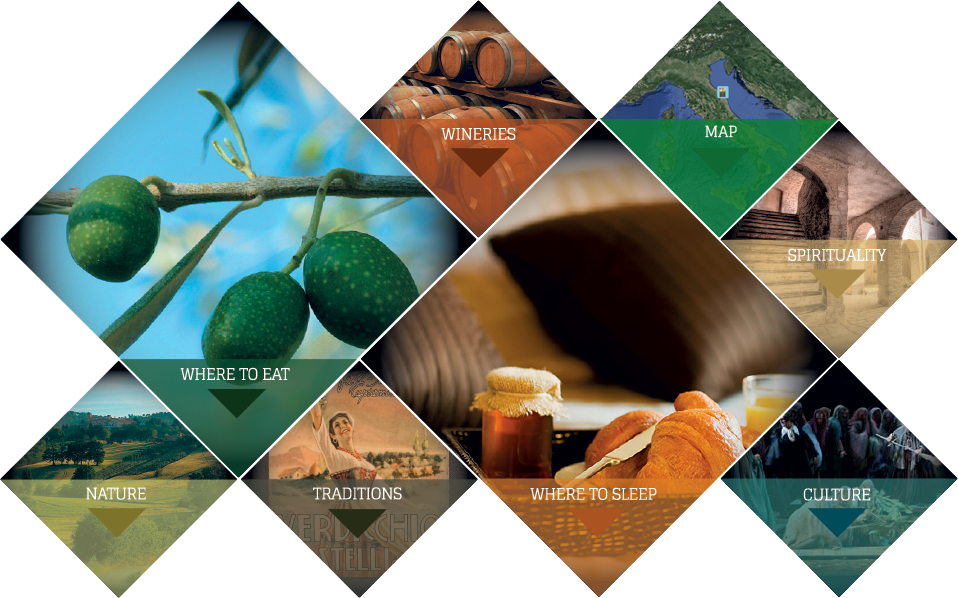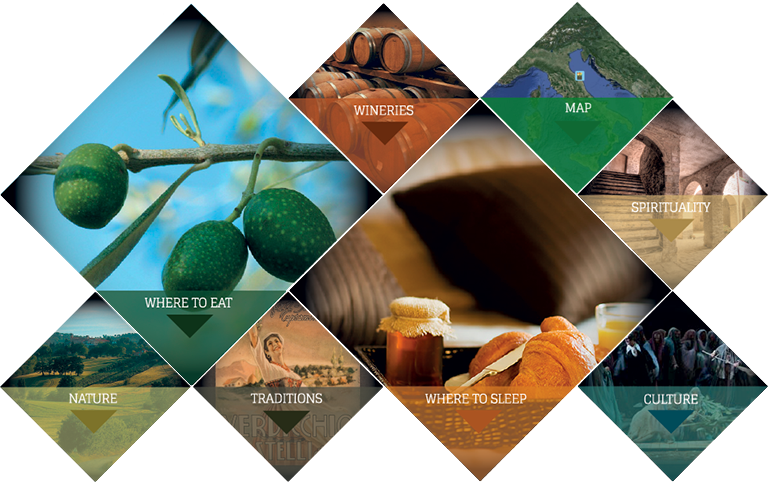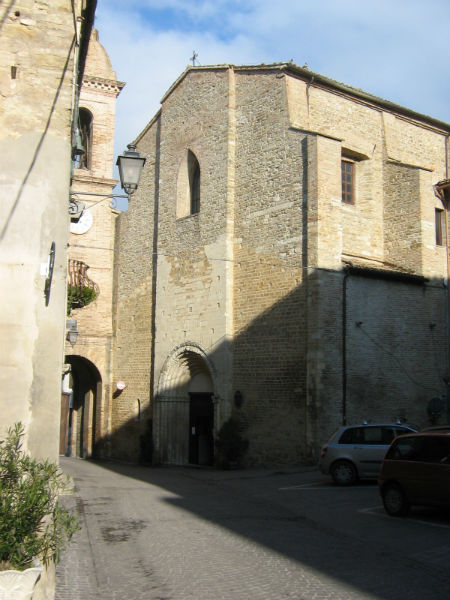
The church was mentioned for the first time in 1270.
It is in Romanesque style and contains various prestigious paintings such as the “Pentittico” by ananonymous author from Fabriano school; the altarpiece depicting an episode in St. Egidio’s life; two big paintings: one representing Anime del purgatorio and the other L’ultima cena.
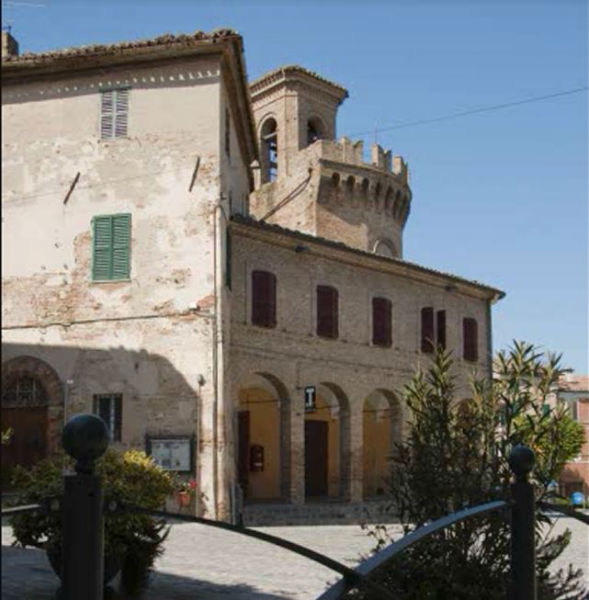
Important natural area rich in flora and fauna where the stream Fossato flows before ending in Esino, the main river of the valley. Thanks to its position, Montecarotto has a drainage-basin particularly rich in surface waters both in autumn and in spring.
Have a relaxing walk along the park which still preserves the ruins of the old mill that drew power from the waters of the stream.
Explore the luxuriant nature of the area and discover the rare species of flowers like the fern and the dracontea.
Since its origin, Montecarotto has been the border line between Jesi and Senigallia and the junction of the Esino and Misa valleys.
Be entranced by the wonderful landscape! You will admire the entire province of Ancona, the river valleys until the peaks of the Apennines and “la Gola della Rossa”.
It’s easy to come here; by car going through the Arceviese SP and SS 76; Jesi is 18 km far , Ancona 47 km; Senigallia 30 km. Highway A14: exit Senigallia or Ancona Nord. By train: Montecarotto-Castelbellino railway station is 9 km far (line Ancona-Rome).
Many funny assumptions are linked to the name Montecarotto: according to popular belief the original name was Mons Iscariotae, that is the land where Judas Iscariot lived and hanged himself.
In reality, the name Montecarotto derives from the Latin Mons Arcis Ruptae the "Mountain of the destroyed fortress," a fortification situated atop the hill because of its strategic position and then abandoned before the thirteenth century. But nothing of the first phase is preserved, maybe the remains found under the church of La Collegiata di Santa Maria are the answer to this "mystery."
In 1248 the cardinal Rainerio, the Pope's vicar, recognized the rule of Jesi over Montecarotto and over the other castles. However, the power of Jesi became effective only in 1301, when Bishop Leonardo renounced his feudal rights. Montecarotto belonged definitely to the County of Jesi and was one of its prestigious castles.
In fact, during St. Florian festival, Montecarotto was the second castle to lay its bid after Massaccio (Cupra Montana).
The fifteenth century was particularly turbulent to Montecarotto which was ruled together with Jesi by Malatesta family from Rimini for a few years.
After ups and downs in 1431, Jesi took possession of the castle. In the second half of the 15th century, thanks to the acquisition of lands by the local owners, Montecarotto started an important development which lasted two centuries.
In the sixteenth century the castles under the rule of Jesi reacted and asked for greater administrative and financial autonomy. At the end of the century and then in 1636 serious plagues struck the area and caused a drastic decrease in population. However, in the sixteenth and seventeenth centuries Montecarotto showed a remarkable vitality by rebuilding the walls, commissioning works of art for churches, renewing the town charter and increasing cereal growing.
In the eighteenth century there was an increase in population and new struggles against Jesi started. But the attempts at independence had no success.
In fact, the dispute ended in 1752 with Pope Benedict XIV’s “motu proprio” pro Jesi. But in 1808 further to the establishment of the Napoleonic Kingdom of Italy, the castles of the County gained their independence.
Montecarotto boasts the vitality of the small entrepreneurship and the long-lived wine-producing tradition which allow it to preserve its identity.
Come here for a stimulating holiday amid the verdant pleasures of its vineyards and with the wide variety of its wines, you can’t afford not to taste!
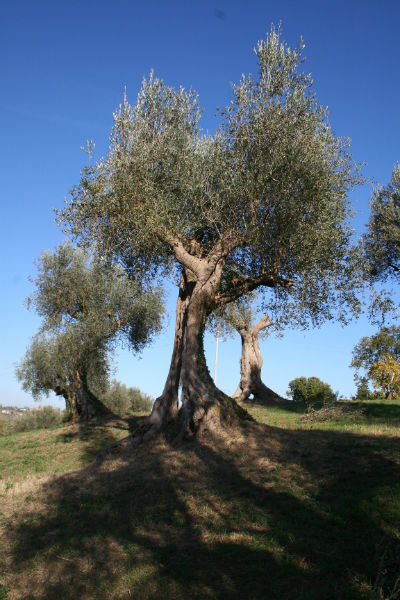
Cupramontana, S. Marco, Calapina, Castelbellino, Monteroberto, Maiolati Spontini, Cupramontana
Distance: km 14
Time advised: 75 minutes
Difficulty: easy
Starting from the parking in front of Colonnara winery, take the road for the historic centre.
Just before arriving at Cupramontana, follow the signs indicating the cemetery . In front of the cemetery, take the avenue on the left . Go through San Marco street and turn left until reaching a junction , then turn right and take the white road. The path becomes flat only for a short distance, then it is narrow again and turns on a slight slope. Turn left and right; at the bottom of a steep slope cross the farmland and then right up to a bar. From here proceed along an old house until reaching a white road.
Follow the steep path to the right (Calapina Street), after about 100 metres turn left and follow the main road for about 500 metres until the junction with the big oak tree. Go straight on for about 100 metres and turn left uphill just before the descent. At the junction take the flat road on the right passing through a fence and a wash-tub and climb up to a big villa with a park; straight down until reaching the tarmac road (S.P. Castelli di Jesi).
Follow the left road that leads to Castelbellino. When you join the village, just before the last houses, turn right uphill to Monteroberto (approx. 800 metres). Then right under the castle walls and go straight up to the Provincial Road (S.P.).
At the junction turn to the right arriving at Maiolati Spontini. Go through the village and take the white road on the left. Continue until you come back to the Provincial Road and follow the signs indicating Cupramontana. After about 1,5 km you are again at the point of departure.





